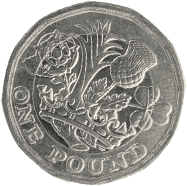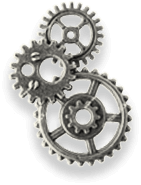THE NEXT FIVE
THE NEXT FIVE - EPISODE 23
Cheers, Fears and Rare Years: The Future of Luxury Spirits
In high spirits: experts discuss the future of the luxury whisky market






































The Next Five is the FT’s partner-supported podcast, exploring the future of industries through expert insights and thought-provoking discussions with host, Tom Parker. Each episode brings together leading voices to analyse the trends, innovations, challenges and opportunities shaping the next five years in business, geo politics, technology, health and lifestyle.
















Featured in this episode:
Tom Parker
Executive Producer & Presenter
Duncan McFadzean
Managing Director at Noble & Co
Jaume Ferras
Creative Director at The Macallan
Jonny Fowle
Global Head of Whisky at Sotheby’s
The premium alcohol industry is about more than just indulgence. It’s a category that is garnering greater attention from consumers, investors and collectors.
Increased disposable incomes, celebrity culture and social media has created new avenues for brand recognition and sales. Partnerships with other luxury brands also bring cross pollination appeal and is an area top spirit brands are looking to take more advantage of. Investing in premium alcohol is also an area of growth. Brand, age and rarity set the standard for big prices. The whisky category has seen records consistently broken in the last few years as wealthy individuals battle for the best bottles. In November 2023, a single bottle of The Macallan 1926 Valerio Adami, one of only 40 bottles originally released, sold for a new record price of £2.18 million at Sotheby's in London.
But there are some headwinds in both the primary and secondary markets that brands and consumers need to weather.
In this episode of The Next Five we speak with Duncan McFadzean, Managing Director at Noble & Co, who discusses the growth and challenges of the primary market and how brands can buck the economic downturn. Jaume Ferras, Creative Director at The Macallan, shows how luxury brands are working together to increase share of pocket. Jonny Fowle, Global Head of Whisky at Sotheby’s, conveys the highs and lows of investing in the secondary market and calls for the joys of consumption as well as investing in fine bottles.
Sources: FT Resources, Forbes, Matter of Form, Mordor Intelligence, Whisky Advocate, Spirit Filled
READ TRANSCRIPT
- Lifestyle
Transcript
Cheers, Fears and Rare Years: The Future of Luxury Spirits
Cheers, fears and rare years: the future of luxury spirits
Soundbites:
TOM: The premium spirits and whiskey market has global appeal
Duncan M Scotch is still seen as the premium category around the world
TOM: However there are headwinds in the primary market
Duncan M: It's a difficult market right now…..there are challenging consumer trends.
TOM: brands are competing for paypackets
Jaume: we compete against what we call a share of pocket.
TOM: But partnering to engage customers
Jaume: We share a similar consumer,discerning, sophisticated,
TOM: And the secondary market has two sides of the story, there’s growth
Jonny: We have so many more aged whiskeys than we used to have.
TOM: And pullback the biggest challenge is the fact that the prices of Scotch whisky are extremely high
TOM
I'm Tom Parker, and welcome to the next five podcast brought to you by the FT partner studio. In this series, we ask industry experts about how their world will change in the next five years, and the impact it will have on our day to day. In this episode we explore the world of luxury spirits, focussing largely on premium whiskey, where we delve into the growth drivers for both the primary and secondary markets and some of the challenges the industry is experiencing.
TOM:
The premium alcohol industry is a category that has been showing steady growth for the last few years. The sector’s Compound Annual Growth Rate has, since 2017, been just north of 8% and is set to remain hovering above that over the next five years. If the premium alcohol market continues with a CAGR between 8 and 10 percent, some analysts predict that by 2032 it could see a global market value of $1.7 trillion. That’s the same as Australia’s GDP in 2023. But there’s a long way to go until then.
Within the premium spirits category sits whiskey, and there are many forms now hitting our shelves, from old favourites like Irish or Scotch to newer contenders like Bourbon and Japanese. The most well known is Scotch Whisky, an industry that contributed 9bn dollars to the UK in 2023. 7 billion dollars of which through export sales. That’s 1.35 billion bottles exported at a rate of 43 bottles per second. While there is certainly growth built in from the pandemic years when people spent more on luxury spirits choosing to drink better and not more, there are some headwinds chopping up the waters.
Scotch figures were still down in 2022 due to the volatile global trading environment. Sales dropped by 9% and the number of bottles exported was nearly 20% lower. On the other side of the Atlantic, the Bourbon market was valued at 5.6 billion dollars in 2023. This relies mainly on domestic sales vs exports. Breaking from its domestic chattel into the international market is both a driver and challenge.
Duncan McFadzean
The statistic I loved is that 80 % of the whiskey that used to be drunk in the world before prohibition in North America was Irish whiskey.
TOM: This is Duncan Mcfadzean, Managing Director at Noble & Co, a corporate finance advisory boutique with a particular focus on the drinks industry and releases an annual Whiskey Intelligence Report.
And then by, I think it was the 1980s, you were down to about three distilleries left in Ireland. So trends can't change. I think you're seeing a resurgence in Irish whiskey.
With bourbon, the question is, can this actually grow outside of North America? So Buffalo Trace is opening a brand home in Covent Garden in London. Are people in the UK going to start drinking bourbon? I don't know. Can tequila cross the Atlantic? Well, the data would suggest so far that Gen Z millennials are actually soaking up tequila in a way that maybe 10 years ago they're drinking gin and tonics. So each category is slightly different.
Scotch is still seen as the premium category around the world. It's still exceptionally popular in North America and then it's growing in places like India, in China, in Korea, et cetera. Africa is sort of the great unknown. There's strengths in Kenya, South Africa, Nigeria, Ghana, but will that be a significant market for Scotch whiskey? No one really knows. It's been a market that's promised a lot. And then the other trend that people talk a lot about is new world whiskeys versus old world whiskeys. So I have a bottle of Israeli whisky on my shelf at the moment. People talk about Australian whiskeys, whiskeys from New Zealand, et cetera. And will we actually start to, on our shelves, have whiskeys from outside the traditional markets and see real growth?
in those markets. But I think Scotch is going to continue to be the one that people really see as this is the category you want to own and you want to have on your shelf.
TOM: So what’s driving this primary market growth in whisky and premium spirits?
Duncan McFadzean
When it comes to drinking the whiskey and the premium market, the first is the rising income around the world.
Duncan McFadzean
The rising GDP argument for China, India, Vietnam, Korea, places like that is meaning that people are choosing to drink better and buy more Scotch whiskey as one example and then the premium products within it. So what are you looking for in that drink? You're often looking for provenance, story and experience. So you might drink less than you did in the past, but you're drinking better drinks. You want a drink that tells a story, we live in a social media age, if you can have a drink that you can post a picture about, tell a story that's an experience, not just a product, then that makes it highly appealing.
Duncan McFadzean
The second factor I would note is celebrity partnerships. So Casamigos, which isn't a super premium brand, is a premium brand. Casamigos Tequila, where George Clooney created this brand and the association with George Clooney. And then later on, Deagio acquiring that brand has led it to have significant success within the tequila market.
And you've seen that mirror across many, many celebrities getting into bed with various spirits brands.
The third factor has been brand partnerships. So the McCallan and Bentley, the McCallan and James Bond, Beaumore and Aston Martin that ties into where people are already bought into a particular brand and then re -associates it in their mind with a particular drink.
And that brand association, the brand partnership, which can go exceptionally deep in some circumstances, has proven to be really, really helpful.
TOM: Celebrity culture and social media is a powerful tool indeed, Clooney and Gerber’s Casamigos was still the fastest growing spirits brand in 2022, and that’s 5 years after they sold it to Diageo for $1 billion. Partnerships with other luxury brands bring the same cross pollination appeal and is an area top spirit brands are looking to take more advantage of. It’s a successful model if done right; both brands profit from it, new market groups are accessed and the nostalgia, history and story of the one company can be used to the advantage of the other.
Jaume:
We have a recent example of our collaboration with Bentley,
TOM: This is Jaume Ferras, Creative Director at The Macallan. Which is a great example for us and is a very inspiring relationship because we share the same values. We share the same vision as well. It's a very similar culture, both British brands and the soul.
We share quite a similar consumer, very discerning, very sophisticated, people that interrogate the quality, interrogate the aesthetics, the design, people that are very demanding on their choices. So I think because we share all of that in common, that has made us work in a beautiful way because we see product design in the same way.
Jaume
So in terms of design, it was quite an interesting process because Bentley sees the wall horizontally. I mean, the car design, you need to design something that is horizontal and it travels. The McCallum world is a vertical world, you know, bottles, our stills where we make the distillation. So it's a very vertical world. So the first exciting thing that we did on Pro Design is to make a bottle horizontal which by definition bottles tend to be particular always to contain the whiskey or the liquid inside of them. So that was one very interesting approach to product design.
The second one is we wanted to have six different elements into the design because the McCallan summarizes its craftsmanship in six steps in the process of whiskey making. So one element of course was the whiskey.
But then the other five elements were glass, which is a material that is common to us and to Bentley. Leather, that is an element that is common to our product design, but also into the interiors of Bentley. Boot is something that Bentley works on the finishes of their cars. And we work with boot and the casks that we make, but also in the products we design. And then copper is a homage to...
our copper steels where we make the distillation
jaume (17:24.238)
And the final element was aluminium, which is a very, very important material for the building of a car. So six materials to represent a story that joined the two brands together and materials that are either one brand or the two brands, we embrace fully in the making of our products.
Tom: The primary market is experiencing headwinds however. Regulatory challenges could create complex licensing procedures across various countries and a speculative election year around the world could fuel protectionism bringing with it higher import taxes in key markets. Geopolitical events could also offer up further barriers to distribution and growth. While there are benefits to celebrity endorsements, celebrities are still human. Mistakes can be made and brands can suffer the fallout (think Adidas and Yeezy) Health concerns and stigma around alcohol consumption is fuelling a NoLo alcohol revolution that is influencing consumer behaviour. Above all, there are challenging consumer trends based on purchasing power and market confidence that is hampering growth.
Duncan McFadzean
so it's a difficult market right now. And you've seen from results from all of the majors on the public markets that have been reporting that there are challenging consumer trends. So whether this is because of actual disposable income coming down,
Or it's actually consumer confidence What's happening as a result of that is that we are trading down in what we're buying in the shops.
it almost doesn't matter what price point you're looking at. So the super premium, the ultra premium, the premium, they're all facing the same issue that if you are being told day after day that you don't have as much money, then your confidence is being knocked and you're less likely to make that purchase.
And actually when you look at where the growth is, it's not 50 pounds, $50 bottles of spirit anymore. It's 35. And so maybe you were buying a 65 pounds bottle of whiskey. Now you're buying a 35 pound bottle. Maybe you were buying a bottle at Christmas to gift her friends and now you're not. Or maybe you're just choosing not to drink spirits at all. So that's...
leading to an excess of stock in the market. The distributors have overstocked and your end markets are not as buoyant. So China is slow, Australia is slow, US, UK, Europe, et cetera. That's going to take time to work through.
TOM: But what does this mean for brands like The Macallan?
jaume
we compete against what we call a share of pocket. So consumers have X amount of money available for buying assets, for entertainment, for things that they want to do and they want to enjoy.
And now whiskey is part of the repertoire in this share of pockets. So if they decide to spend money on a watch, for example, on a piece of clothes or in an art piece or in a car, it's less money that they're gonna invest in or they're gonna spend on whiskey. The opposite way around as well. If we can make ourselves a good choice for them, they can stop spending money on other things and spend them in whiskey.
jaume
the high -worth individual and ultra high -net -worth individual consumers that we have, we are not seeing that they stop their loyalty to our product. Quite the opposite. I think they want more products, they want more experiences, they want more limited releases, they want to experience different type of single models that we create as well. So it's such a healthy...
in terms of such a healthy consumer group in terms of their ability to spend. And we have never observed that they stop spending on at least on us. But we don't register. We look a little bit overall luxury consumption. And it doesn't feel that no matter what happens with interest rate and no matter what happens in the world, they don't stop.
TOM: On the other side of the coin is the secondary market. Investing in premium alcohol is nothing new. Usually dominated by fine wines, other categories are pulling in passion investors looking to diversify their portfolio as well as enjoy the product. Brand, age and rarity set the standard for big prices in the secondary market. The whisky category has seen records consistently broken in the last few years as wealthy individuals battle for the best bottles.
Jonny Fowle
the popularity of spirits as an investment, it really lies within the Scotch whiskey category predominantly,
TOM: This is Jonny Fowle, Global Head of Whiskey at Sotheby’s
but I would say that nowadays actually pound for pound, you're probably seeing the biggest rise in American whiskey. That being said, Scotch saw the most extreme boom in prices, if you look back from about
20, 30 years ago to now, the prices are completely non -comparable. There are various different reasons for that. And I think actually predominantly in Scotland, you have a product which has a lot of history. It's got the ability to age, which it really does much better than any other spirit. You have whiskeys from Scotland that drink very well at 80 plus years old, which is really difficult to do elsewhere in the world.
And then you also have provenance. And I think the key thing here is that it's, when we talk about Scotch whiskey, we're really talking about single malt, which is whiskey from a single distillery. Blended whiskey, which comes from many different distilleries, doesn't do so well.
TOM: In November 2023, a single bottle of The Macallan 1926 Valerio Adami, one of only 40 bottles originally released, sold for a new record price of £2.18 million at Sotheby's in London, dwarfing the previous world record of £1.45 million paid in 2019 for a 60 year old, 1926 again from The Macallan. Given that just 10 years ago the most expensive single bottle of whisky was below £80,000 shows the huge growth in whisky investing. From 2010 to 2020, according to the Knight Frank luxury Investment Index the rare whiskey category saw a 564% rise over the decade.
Jonny Fowle
you have two sides of the rare high value whiskey industry and two sides of the increase. So on the one hand, you have these super rare bottles like for instance, the McCallan 1926, you know, that people were buying in the 80s and 90s for around 5 ,000 pounds. And as you say,we sold one for 2 .18 million last year.
And there are very few of these bottles. And this bottle particularly sort of sits outside of what I would describe as the normal realm of whiskey collecting. It's this bottle, the McCallan 1926 is very much the thing that does not obey the rules of Scotch whiskey collecting. And its price increases based on the fact that if you really love whiskey and you have all the money in the world, that is the best thing to buy. So it will always be the most desirable bottle. On the other hand
The growth comes from the fact that we have so many more aged whiskeys than we used to have. So if you think about it, in 1983, McCallan released their first 50 year old, a 1928 vintage, and it cost £50. That probably sells now for £50,000 maybe even $100 ,000 US dollars.
So the price increase has been dramatic, but then it's because it was so cheap at the time that people were drinking these bottles. So quite a lot of them have been open. There are so few left and it becomes really desirable. You also have the fact that in the eighties, there was a financial crisis that led to blenders reducing their orders of single malt.
Jonny Fowle
Because in the 80s there were so few casts of single malt being ordered by the blenders to produce their blended whisky. You had these warehouses in Scotland with barrels sitting there, they weren't being bottled because the sales of blended whisky were low.
And so you have whiskies now that have been sitting there since the eighties and late seventies, which are now in their fifties. So when in 1983, McCallan released their first ever 50 year old, it was a very rare occurrence. Now, 50 year old whiskies are not that unusual, but the prices have still held up. So you suddenly have a huge influx of high value whiskies entering the market. Um, and pretty much every distillery, which
operates in the most premium end of the industry are able to release 50 year old plus whiskies.
TOM: But what goes up must at one point come down.
Duncan McFadzean (21:31.425)
So the trends in the auction market that we looked at in 2023 showed that that market was starting to soften. The very latest data for Q1 2024, which we will publish in June, show that the Q1 value was down by 27%, which is quite an incredible drop.
And the number of bottles that were actually sold at auction were down 16 % year on year. So 27 % drop in value, 16 % drop in volume. And that shows you how soft that market is. And a lot of that demand fall has actually been for the lowest priced bottles. So we're looking at bottles that are selling for a hundred pounds or more at auction. So it's maybe not the...
mass market what you would buy on the shelf, but it's a fine and rare bottle. So within that, what are you seeing? You're seeing collectors are being much more savvy about selling. And so they're holding on while prices are weaker. And so if you've got an exceptional bottle like the McCallan Valerio Damme 1926 then those sorts of bottles are still going to move. But maybe if you've got a
a bottle that's selling in the thousands or the tens of thousands, you're going to hold on to it for now.
TOM: As seen there are challenges still in the secondary market.
Jonny Fowle
The biggest challenge currently facing the secondary market is the fact that the prices of Scotch whisky are extremely high and we're reaching a point where there's a slightly unsustainable level of increase.
Jonny Fowle To give some examples of this, if you took a 52 year old Karua's hour, 1960, this is a Japanese whiskey. It was released in 2014 for about 12 ,000 pounds per bottle. And in 2020, so just seven years later, we sold one at Sotheby's for 363 ,000 pounds. And there aren't many things in the world that have increased in price so dramatically as that.
Jonny Fowle And really throughout 2023, we saw quite a significant decrease in pricing. It does seem that the industry is due for a correction, which were...
undergoing at the moment. I think it's gotten to the point where people worry about the headroom. So in the secondary market, we've seen these huge gains, but equally the producers, the distilleries are releasing their new skews or their new premium whiskey releases at these prices that you see in the secondary market, which leaves very little headroom for people who are in it for investment. And it also prices out people who want to drink. So I think that...
We're at this place now where we have to question what is the point of making these whiskeys? Are they designed to be drunk? And if so, is that price point realistic to drink at? Are they made for investment? And in which case is the release price or the current secondary market price? Does it leave you any headroom for investment? Or are they just there to be appreciated as a sort of works of art? And if so, are there enough people out there who have that love for whiskey and wouldn't just go out and buy a work of art, or a car, or a watch, or something that you could have some more practical application of, remembering that if you do drink your whisky, it's done. It's the equivalent of buying a car and then just driving it off a cliff.
TOM: So what does the next five years look like for the premium spirits industry?
Duncan McFadzean
So I think some of the short -term challenges will disappear. So the de -stocking will work its way through. The consumer confidence will return. You're going to see new markets like India open up. And you're still going to see people seeking that experience, caring about story and provenance, also about sustainability, glass.
packaging, and they're going to continue to drink a variety of products.
End demand as a result of these trends and the rising wealth will continue to go up. And I think what you'll see is premium and higher price categories, super premium, ultra premium, will outpace lower price categories in growth terms. And that trend is going to lead to more mergers and acquisitions because companies want to add more of these brands to their portfolios.
It's going to remain a very profitable end of the market. The collectors are going to continue to want the rarest of bottlings. I don't see that going away anytime soon. And then I think you will see the rise of technology coming into it, whether that's AI or blockchain, web3. And I think the blockchain side of it will be industry processes. It will be cask and bottle tracking.
It will be NFT, fractionalization of assets as a way of buying and trading bottles and casks. So in some ways, more of the same, but certainly pulling out of what you're seeing right now, which is a more challenging environment.
TOM: And from a brand's perspective?
jaume
We think we expect anything new to come in the next five years. What we expect is that certain things that are already happening are going to happen in a more pronounced way,So, for example, what we expect is the world's responsibility is going to grow in its portents.
Consumers want to drink with responsibility. It's responsible consumption, drinking less and drinking better. Responsibility for the choices they make in terms of the quality of the product, It's a responsibility also on sustainability. More and more consumers are going to start stopping consuming certain brands that are not responsible.
with the environment. So I think this sense of responsibility towards ourselves, towards the planet and towards the communities around us is going to grow a lot. Something that will happen is the increase in appreciation. I think the more time passes, the more consumers are educated and the more demanding they become. And we need to interact with them with depth.
and substance and authenticity. I think the social aspect of consumption won't change. Quite opposite, can go even bigger. We want to have fun. We want to engage with our family, with our friends, with our neighbors.
with our colleagues at work. And of course, craftsmanship and the drink that you offer becomes very important. And also, one thing that will happen is those brands that are unique, they're
jaume
going to start more direct interaction with the supply chain of the different elements and components they need just to stress and protect the uniqueness. You want to make sure that nobody can get any clues to you.
So I'm guessing more responsibility, more appreciation, more socialization and more uniqueness are things that we expect to grow. It's important during the next five years.
TOM: And for the secondary market?
Jonny Fowle
I think the next five years are going to be very interesting for Scotch and Japanese whiskey. I think there are a few challenges ahead. I actually think for American whiskey, we're still seeing quite a significant explosion in value, which I mean, out of all three categories, Scotch, Japanese and American, the US whiskey market is, I mean, it's a point market for buyers, but the prices per bottle are actually pretty low.
Jonny Fowle
So I think we're going to see a lot of growth there still. And that's an interesting space. With Scotch and Japanese, I think there's some room for correction. And I think within the next two years, we're probably going to see a bit of a stagnation. And then from the distillery side, a bit of a change in how you approach the market with your high aged and rare whiskeys. I do think that the need to encourage people to drink more whiskey rather than just collect.
is paramount and I think that is going to be the thing that changes the most over the next few years. How do you encourage people not just to spend a lot of money on your whiskeys, but how do you encourage them to enjoy it and go from being consumers who look at a bottle to consumers who actually consume a bottle? That is going to be the key. How that's done, I'm interested to find out.
But I do imagine that that will be the major shift that we see over the next five years.
TOM: The premium alcohol industry is clearly more than just a fine tipple. It’s a blend of history, consumerism, society, collectability, investment, and indulgence. It’s driven by the similar desires as many luxury products. There’s growth in the market as long as purchasers have the desire to buy it. H G Wells once said that ‘Society is based on want. Life is based on want’ and the consumers and investors of fine spirits, including whiskey, have different wants. There are heady outliers in the secondary market elevating the prices of fine and rare bottles to record highs, but even that part of the market is softening and correcting to the societal status quo. The FT’s Fine Beverage Survey 2024, showed that the reasons for purchase of whisky were heavily in favour of consumption at 68% over investment at 7%. The desire is for enjoyment over investment. And when it comes to enjoyment they want to consume the best but current economic factors are affecting consumer decisions as they ponder premium purchases.
This is where product quality and a captivating brand story that creates an emotional connection with consumers can help brands brace against economic downturns. Tapping into the social trends afforded by media, cult celebrity or luxury brand partnerships help to weave the brand story into our lives, to excite the want even as belts tighten and less corks pop.
Parts of the premium spirits market, like scotch, date back over 500 years. Trends change, new products are launched and the industry adapts. There are some exciting years to come, technology will play its part and challenges will remain. When it comes to want, there will always be cheers, fears and rare years.






